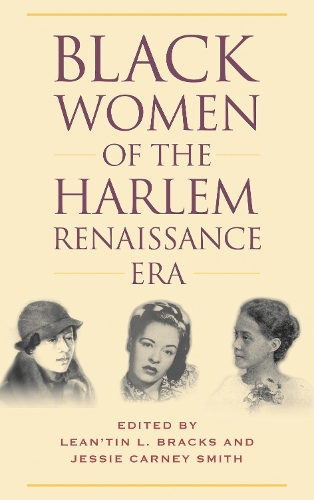
Black Women of the Harlem Renaissance Era
(Paperback)
Available Formats
Publishing Details
Black Women of the Harlem Renaissance Era
By (Author) Lean'tin L. Bracks
Edited by Jessie Carney Smith
Bloomsbury Publishing PLC
Rowman & Littlefield Publishers
24th November 2017
United States
Classifications
Tertiary Education
Non Fiction
Gender studies: women and girls
Ethnic studies / Ethnicity
History of the Americas
305.48896073
Physical Properties
Paperback
328
Width 175mm, Height 255mm, Spine 20mm
653g
Description
The Harlem Renaissance is considered one of the most significant periods of creative and intellectual expression for African Americans. Beginning as early as 1914 and lasting into the 1940s, this era saw individuals reject the stereotypes of African Americans and confront the racist, social, political, and economic ideas that denied them citizenship and access to the American Dream. While the majority of recognized literary and artistic contributors to this period were black males, African American women were also key contributors.
Black Women of the Harlem Renaissance Era profiles the most important figures of this cultural and intellectual movement. Highlighting the accomplishments of black women who sought to create positive change after the end of WWI, this reference work includes representatives not only from the literary scene but also:
ActivistsActressesArtistsEducatorsEntrepreneursMusiciansPolitical leaders Scholars
By acknowledging the women who played vitalif not always recognizedroles in this movement, this book shows how their participation helped set the stage for the continued transformation of the black community well into the 1960s.
To fully realize the breadth of these contributions, editors Leantin L. Bracks and Jessie Carney Smith have assembled profiles written by a number of accomplished academics and historians from across the country. As such, Black Women of the Harlem Renaissance Era will be of interest to scholars of womens studies, African American studies, and cultural history, as well as students and anyone wishing to learn more about the women of this important era.
Reviews
The Harlem Renaissance is a name ascribed to the cultural, social, and artistic mode occurring between 1919 and 1940 that defined many black Americans. While the majority of those engaged in this outpouring of expression were male, there was also considerable female participation. However, most of the scholarship on black women of this period has concentrated on literary or artistic achievements, omitting other contributions that women made. This very fine collection, edited by Bracks and Smith, brings together an array of essayists who focus on their subjects' roles as activists, educators, entrepreneurs, journalists, philanthropists, playwrights, professionals, or entertainersand, of course, writers. There are more than 200 women profiled, which provides a depth and breadth that no other single monograph has achieved to date, thus rescuing many of these women from obscurity. Alphabetical entries range in length from one paragraph to several pages. The volume includes a chronology and an appendix of entrants' names organized by their various roles. These features, in addition to the bibliographic references, index, and a list of the volume's contributors, make for an arrangement that will be very useful to the researcher. This well-done encyclopedia provides many delightful surprises for anyone researching the Harlem Renaissance. Summing Up: Recommended. Lower-level undergraduates and above; general readers. * Choice Reviews *
Author Bio
Leantin L. Bracks is professor of English and African American literature at Fisk University in Nashville Tennessee. She is the author of Writings on Black Women of the Diaspora: History Language and Identity (1997) and African American Almanac: 400 Years of Triumph, Courage and Excellence (2013).
Jessie Carney Smith is dean of the library and William and Camille Cosby Professor in the Humanities at Fisk University in Nashville, Tennessee. She is the author or editor of several notable books including Black Firsts: 4000Ground-Breaking and Pioneering Historical Events (3rd ed., 2013) and The Handy African American History Answer Book (2014).
